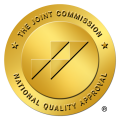How Stress Impacts YourAddiction Treatment Staff
This article explores how stress impacts your addiction treatment staff and reviews the best strategies for reducing stress in your staff.
Article Contents
Workplace Stress
Healthcare is a stressful profession involving taking care of other peoples’ lives, and mistakes or errors could be costly and sometimes irreversible. Addiction treatment staff is no exception. Workers in this field help people overcome their addiction through services that range from medical detox to inpatient treatment and aftercare.
Workplace stress is when a person’s body reacts to pressure from work-related demands in a way that causes physical or emotional harm. Workplace stress can affect anyone, but it is most prevalent among healthcare professions, including doctors and nurses.
The Stress of Healthcare Professions
Some professions involve more stress than others. Generally, professions that involve human contact and require people to possess fast decision-making skills are among the most stressful ones. Healthcare professions are rated as among the top six most stressful professions today.1 According to studies, a whopping 69% of healthcare workers feel stressed, and 17% feel highly stressed at their job.2
Affects Overall Quality of Life
Although being a healthcare worker is a meaningful and fulfilling job, it can also be quite demanding and stressful. Hospitals are environments with stressful conditions, which can negatively affect healthcare professionals’ physical and emotional wellbeing, leading to low quality of life.
Professional Burn-Out
Research has shown that long-term exposure to stress can lead to burnout. Although it is challenging to measure and quantify the negative effects of burnout correctly, studies indicate that it may increase the risk for errors, influence the quality of patient care, decrease professionalism, and promote early retirement.
Anxiety
Work-related critical incidents may induce anxiety, depression, and even post-traumatic stress disorder (PTSD) among healthcare practitioners. Additionally, anxiety can also negatively affect the behavior of healthcare workers such as doctors and nurses toward patients. Most healthcare workers cope with anxiety by working part-time or switching jobs.
Lower Professional Satisfaction
Workplace anxiety may lead to lower quality of care toward patients. As a result, this may decrease professional satisfaction and healthcare practitioners’ quality of life.
Lack of Support From Higher-Ranking Staff
Lack of support from higher-ranking staff is also associated with the development of stress-related symptoms.
Recognize Symptoms of Stress
In the following section, we will look at six common signs and symptoms of stress.
Irritation
Irritability is a common trait among people who are suffering from stress. It is a mental or physical condition characterized by an increased tendency to experience anger, agitation, or annoyance.
Anger
In addition to irritability, anger is another common symptom of stress. One study found a connection between higher levels of anger and mental stress, as well as the possibility of a stress-related heart attack.3
Lacking Motivation
Low motivation is often experienced when a person suffers from prolonged stress. A lack of motivation can cause a person to feel lethargic and uninspired. In addition, it can also affect a person’s work performance and personal relationships.
Feeling Sad or Depressed
Stress can lead to emotional and mental symptoms like depression. One study of 816 women suffering from major depression discovered that the onset of depression is associated with acute and chronic stress.4
Another study of 240 adolescents found that high levels of stress are associated with higher levels of depressive symptoms.5
Trouble Sleeping
Concerns about work, health, finances, or family can keep a person’s mind active at night, leading to difficulties sleeping. Stressful life events may also lead to sleep problems.
Trouble Concentrating
Being unable to concentrate is another symptom of stress. Stress activates the fight or flight system that signals the body there is a threat in the immediate environment. Work environment stress can prevent a person from acquiring the focus they need to concentrate on a task.
How to Reduce Stress in Staff

Stress is a common and costly problem in today’s workforce. Workers who feel stressed are less productive and more likely to make mistakes.
Here are some tips on how to reduce stress in your addiction treatment staff:
Physical and Mental Relaxation Interventions
There are ways to combat stress without medication or other treatments that come with negative side effects. Studies have shown that relaxation techniques, such as meditation and yoga can effectively reduce stress levels.
Breath Focus
This method is one of the most popular meditation techniques. It is a very effective way to de-stress and calm the mind. The breath focus relaxation technique involves taking deep breaths in through the nose and slowly exhaling through the mouth. Even five minutes per day can help your addiction treatment staff feel more relaxed and centered.
Mindfulness Meditation
Mindfulness is a mental state of being aware and completely in touch with our thoughts, feelings, bodily sensations, and surrounding environment. It can be used as a therapeutic technique to relieve stress and anxiety. It is also one of the most popular coping strategies to deal with everyday life.
Yoga
Yoga is an ancient practice that uses physical postures, breathing techniques, and meditation or relaxation to help bring the body and mind into balance.
Progressive Muscle Relaxation
Progressive muscle relaxation is a form of mind-body relaxation. The goal is to reduce physical and emotional tension by focusing on the feelings of muscles contracting and relaxing.
Body Scan Meditation
Body scan meditation is a type of mindfulness practice that involves scanning one’s body from head to toe. The purpose of this exercise is to help a person become aware of the sensations within the body and to observe how these sensations change over time.
Guided Imagery
Guided imagery is a therapeutic technique that involves the use of imagination and suggestions to evoke and guide feelings and thoughts. It can be used in a variety of different contexts, such as healing from injury or illness, managing pain, enhancing creativity, and promoting wellness.
Support From Management
Some things that may make your addiction treatment staff stressed include low wages, lack of opportunity for growth, too heavy a workload, long hours, and unrealistic job expectations. The good news is that all these workplace conditions that stress out your doctors, nurses, and other healthcare professionals can easily be addressed by management.
It is critical for managers to notice signs of stress in employees, such as decreased productivity, lower quality of work, and mistakes. They must encourage employers to take regular breaks and exercise daily, take time for friends, pursue hobbies, or take time off.
In addition, managers can create a positive work environment by showing employee appreciation and recognition for their great work. An open-door policy where employees can feel comfortable sharing their concerns is another strategy that can help reduce stress.
Rest Breaks
One of the best ways to ensure your addiction treatment staff stays productive at work is by making sure they are taking frequent breaks.
Research has found that taking breaks can have a tremendous impact on a person’s wellbeing. Breaks can reduce or prevent stress, help boost performance, and reduce the need for a long recovery at the end of the day.6
Another study indicates that taking lunchtime breaks can boost energy levels at work and lower exhaustion.7
Resources
https://www.ncbi.nlm.nih.gov/pmc/articles/PMC4768542/
https://www.careerbuilder.com/advice/stress-is-part-of-the-job-for-health-care-workers
https://www.ncbi.nlm.nih.gov/pmc/articles/PMC4268485/
https://pubmed.ncbi.nlm.nih.gov/19496077/
https://pubmed.ncbi.nlm.nih.gov/21928863/
https://journals.humankinetics.com/view/journals/jpah/12/1/article-p109.xml




